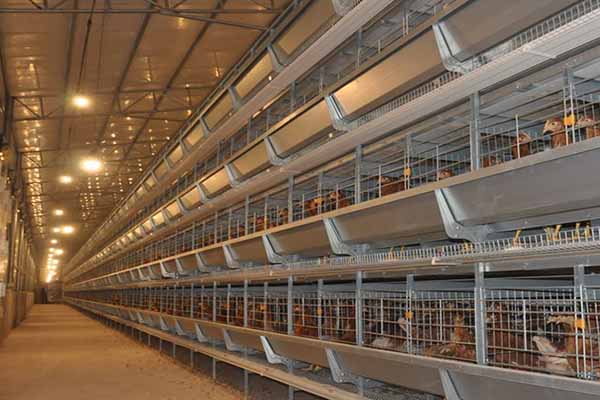Uganda’s 10,000 Chicken Farm Embraces Environmental Control Automation Solution
Time : 2025-06-28
The poultry industry in Uganda has been witnessing remarkable growth, with farms scaling up their operations to meet the increasing demand for chicken products. One such farm, with a capacity of 10,000 chickens, has taken a significant leap by implementing an advanced environmental control automation solution. This article delves into the intricacies of this solution, its benefits, and the impact it has on the farm’s efficiency and sustainability.
Introduction to the Uganda 10,000 Chicken Farm
Nestled in the heart of Uganda, the 10,000 chicken farm is a testament to modern poultry farming practices. The farm, which has been operational for over five years, has seen a steady increase in its flock size due to its commitment to quality and efficiency. Recognizing the need for a robust environmental control system, the farm management decided to invest in an automation solution that would not only enhance productivity but also ensure the well-being of the chickens.
Environmental Control Automation Solution: A Brief Overview
Environmental control automation is a system designed to monitor and manage the farm’s environment, ensuring optimal conditions for the chickens. This system uses sensors, programmable logic controllers (PLCs), and other automation technologies to regulate temperature, humidity, air quality, and other critical parameters.
Components of the Solution
1. Temperature and Humidity Sensors: These sensors continuously monitor the internal farm environment, ensuring that the chickens are kept in a stable temperature and humidity range.
2. Air Quality Monitors: The system measures the levels of ammonia, carbon dioxide, and other harmful gases to maintain a healthy atmosphere for the chickens.
3. Programmable Logic Controllers (PLCs): PLCs act as the brain of the system, processing data from the sensors and making decisions on how to adjust the farm’s environment.
4. Ventilation Systems: Automated ventilation systems adjust the airflow to maintain the desired temperature and humidity levels while ensuring adequate air exchange.
Benefits of the Environmental Control Automation Solution
Increased Productivity
The implementation of the environmental control automation solution has significantly increased the farm’s productivity. By maintaining optimal conditions for the chickens, the mortality rate has decreased, and the growth rate has improved. This has directly resulted in a higher output of eggs and meat.
Enhanced Chicken Welfare
The automated system ensures that the chickens are always in a comfortable environment, which reduces stress and improves their overall health. This leads to healthier birds and a better quality of produce.
Energy Efficiency
The automation system has also contributed to energy efficiency. By precisely controlling the farm’s environment, the farm consumes less electricity, resulting in lower operational costs.
Cost Savings
The long-term benefits of the automation solution have been reflected in the farm’s financial statements. The reduced mortality rate and improved growth rate have led to increased profits, while the energy efficiency has helped in cutting down operational costs.
Implementation Process
The implementation of the environmental control automation solution was a meticulous process that involved several stages:
1. Feasibility Study: A comprehensive feasibility study was conducted to assess the viability of the project.
2. System Design: The farm’s specific requirements were taken into account to design a customized solution.
3. Installation: The system was installed by a team of experienced professionals.
4. Testing and Optimization: The system was thoroughly tested and optimized to ensure its effectiveness.
Challenges and Solutions
Despite the numerous benefits, the implementation of the environmental control automation solution was not without its challenges. Some of the challenges faced and their solutions are:
1. Technical Knowledge: The farm’s staff required training to operate the new system. This was addressed by organizing workshops and providing ongoing support.
2. Integration with Existing Infrastructure: The automation system had to be integrated with the farm’s existing infrastructure. This was achieved through careful planning and coordination.
3. Maintenance: Regular maintenance is crucial for the system’s longevity. The farm has established a maintenance schedule to ensure smooth operations.
Conclusion
The adoption of an environmental control automation solution at the Uganda 10,000 chicken farm has been a game-changer. The system has not only improved productivity and chicken welfare but has also contributed to energy efficiency and cost savings. As the poultry industry continues to grow, such automation solutions will play a vital role in ensuring sustainable and profitable operations.
Tags












